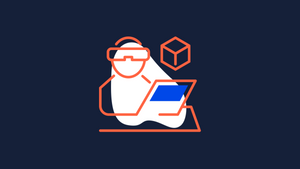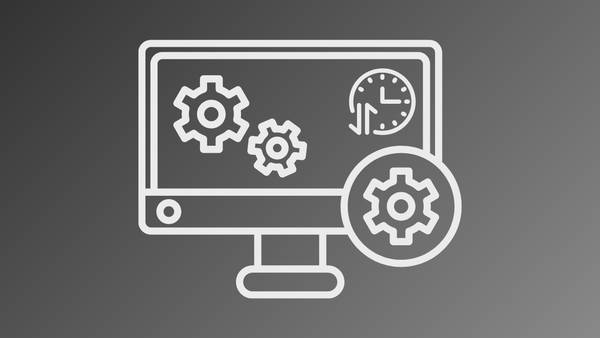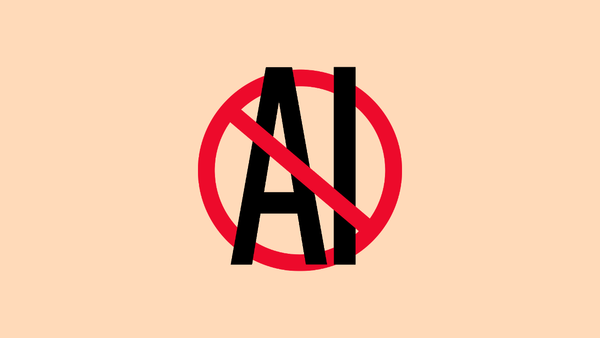Hearing someone talk about Web3 can be intimidating at the very least, and confusing at the best. When did we go to Web3; aren’t we still on Web1, or as we call it, just the “web”? Or is it just another way people are calling the WWW these days? The answer to both of these questions is a hard, cold no.
First of all, no one’s definitely calling WWW Web3. Instead, Web3 is an idea for a new iteration or version of the WWW. And second, we most certainly are not on Web1. The version of the internet most of us use these days is Web2. Many people hail Web3 as the future of the internet. Although the term has existed for almost a decade now, many people call it “hazy”, a term that defies definition. Let’s tackle it, shall we?
Web1 and Web2
Before we go further, it’s time for a little history lesson. Web1 is what we call when the internet was in its earliest stages. Most websites were static web pages at this point. Looking at the timeline, Web1, (or Web 1.0) roughly refers to the internet as it existed in the years 1991 from 2004. At this point in time, most users were consumers of content, not producers.
Consuming content on a website was much like reading a magazine. End-users didn’t have any control over the production of the data. They were passive consumers, not active. But the internet was a set of decentralized protocols at this point.
Then, starting from 2004 and continuing to the present era, we’ve been using Web2. There isn’t a formal upgrade to the internet, even if sounds like versions of a software update. These terminologies have just come to exist to define eras of the internet.
Web2 is the era of centralization. Users are not just consumers, but also producers of content. Platforms like Tumblr, Blogger, or social media platforms like Facebook, Twitter, YouTube ushered it in. Users can produce content and interact with it. But the content is mostly stored in central repositories. Companies like Google, Facebook (or Meta), Amazon, etc. own a major share of these data repositories.
Web3 is supposedly the next step in this evolution. The internet will be decentralized once again where users will own part of the internet and have control over their content, breaking the monopoly of Web2.
Web3 vs Web2
One of the major reasons people believe Web3 is the future is because they feel the need to replace Web2. But what is exactly wrong with Web2? And how will Web3 fix that?
Most Web3 believers say that the Web2 setup is no good. And hence, we need a new direction. Web3 still offers an interactive internet but one that’s decentralized.
Since the internet will be decentralized, no one company will own any data. Hence, no one will be able to restrict access to it. Consider, for example, Twitter. Twitter can remove any tweets or suspend any accounts that violate the community guidelines. In other words, the company decides your access to the site. In a Web3 model, no one can censor you or deny you access to the service. Web3 aims to bring openness and transparency to the internet that’s currently absent in Web2.
With Web2, companies also monetize our data with targeted ads. In Web3, users don’t have to worry about abuse of their data because they’re not signing it over to corporations.
Web3 also addresses other issues of privacy and security that Web2 possesses. With Web2, data is stored in centralized servers. They even store some of your data without your consent. But more importantly, the concept of centralized servers puts those users at the most risk who live in countries without the freedom of speech.
Governments can compel apps to turn over the data. It’s even easy for them to intervene, seize or even shut down apps. Web3 eliminates this issue with the decentralized, peer-to-peer network architecture.
On Web2, we don’t also own the content we post to social media networks, no matter how much we would like to pretend otherwise. Any value our content creates profits the platform, and not us. But on Web3, users won’t only own it, they’ll also be able to monetize it. NFTs are one of the earliest examples of that.
Web3: A Definition
We can loosely define Web3 as a decentralized ecosystem on the internet based on the blockchain. It will also incorporate token-based economics. The most important thing is that Web3 is not here yet. It’s a speculation about the future where the Web3 believers say the internet is heading. That’s why it’s so difficult to explain it because there are a lot of visions floating around. Still, some properties are common.
Web3 networks will be arguably more open, permissionless, and trustless.
- Open: The applications and software will be open source on Web3. They will be executed transparently by an accessible community of developers. Any apps and platforms created on Web3 won’t be owned by some central governance body either.
- Permissionless: Users won’t need permission from any governing body to participate in the network in any capacity.
- Trustless: The network won’t require us to put our trust in a third-party service. Interactions, whether public or private, will be independent of a third-party intermediary. In fact, Gavin Wood, the head of the Web3 foundation, wants users to trust less going forward. As in, don’t put blind faith in a third-party service.
Web3 Architecture
Web3 won’t involve sharing your data in exchange for using a service. Instead, users won’t have to give over their data; they’ll still own it. They will be able to participate in the governance of the network. Users will have a say in how the network will operate and what new features to implement using a simple mechanism of voting.
Users will be somewhat like shareholders of the network. Instead of shares, the blockchain networks have their native cryptocurrency token. Holders of enough of these tokens get to participate in the governance of the network. Users can further earn their ownership stake by helping in running and maintenance of the network.
The Web3 network will have 3 main layers of innovative technology: edge computing, decentralized data networks, and artificial intelligence.
Web2 mostly uses cloud servicing and data centers to process your data. But Web3 is spreading data centers to the edge, i.e., edge computing. In edge computing, the data is processed and analyzed closer to where it is generated. Estimates are that the current model of processing data in data centers will become obsolete in a few years due to the increased use of more and more IoT (Internet-of-Things) devices. Web3, too, would rely on this new technology.
Decentralized data networks and artificial intelligence, when layered together, would create the foundations of the Web3 network. It would be a world that doesn’t compromise privacy and AI predictions go beyond targeted advertising.
Web3 vs Web 3.0
It is important to note that although some users interchangeably use Web 3.0 for Web3, they are not exactly the same. Web 3.0 is the concept of a semantic web that Tim Berners-Lee proposed in 1999. It aimed to make the internet data machine-readable. It proposed a future where machines will be able to understand and analyze all data – links, content, as well as transactions between people and computers.
Now, the semantic web is not the same as Web3, but the concept is still a part of it. When defining Web3, one important concept that comes up is the processing of information by apps and websites in the way humans do. Technologies like machine learning, artificial intelligence, big data, etc. will aid this.
Semantic web and artificial intelligence will prove to be fundamental for Web3 for programs to understand data contextually and conceptually as Web3 envisions.
DAOs in Web3
If centralized organizations that exist today will no longer own apps in Web3, what will companies look like? Introducing DAOs: Decentralized Autonomous Organizations. These organizational structures are already starting to gain traction in the existing Web3 space today.
DAOs are more transparent than traditional companies in addition to being more globally accessible. Members holding the native token of the company get to decide the direction the company goes in.
Web3 and Identity
Even your identity will work differently in Web3 applications. In Web3, your public identity will be mostly tied to the public address of your wallet. Whether or not you’d want to tie your real identity to it will be entirely up to you.
Web2 authentication methods like OAuth or email & password require you to provide some personal information at least. Web3 won’t need that. You don’t even have to offer a name if you don’t want to.
Web3 Technologies
Web3 sounds an awful lot like blockchain technology, doesn’t it? So, is that all Web3 is? Definitely not. Sure, a preliminary version of Web3 technology exists right now in form of cryptocurrencies and blockchain networks, but that’s just the tip of the iceberg. Web promises a myriad of applications in every wake of life in the coming years, just like Web2 at the moment.
Web3 and blockchains are closely related because both are based on decentralized ledger technology (DLT). In fact, you can think of the blockchain networks in existence today are an early preview of what Web3 has to offer.
Blockchain ledger technology is a new way of storing data on the internet. A blockchain network stores data on blocks. These blocks are linked to previous blocks. Changes to any blocks cause all the subsequent blocks to change, which makes the whole setup so secure. Encryption and distributed networks are the foundations of blockchain.
The data on the blockchain is encrypted. So, only parties that have permission to access the data can view it. So, even if it uses a peer-to-peer distributed network of peer-to-peer computers, not every node in the network can access the data even if they’re storing it.
Cryptocurrency, one of the earliest uses of blockchain networks, will also have a role to play in the future Web3. Most decentralized applications will be token-based. And native cryptocurrency tokens provide the financial incentive for people to participate in the network.
Many experts believe that blockchain and cryptocurrency technology will have a symbiotic relationship with Web3. All three will converge together to serve the various fields in the coming times.
Currently, the most use we see for Web3 has been in the finance sector. Smart contracts have led to a rise in NFTs and a slew of DeFi protocols. DeFi (Decentralized Finance) is a concept of peer-to-peer financial model that removes intermediaries like banks, brokerages, and NBFCs (Non-Banking Financial Companies). It users smart contracts to remove the need for any human intervention in the middle. A smart contract is a computer code that executes itself when certain conditions fulfill.
All DeFi projects are based on the blockchain and have open-source code so anyone can inspect and audit the code.
Web3 technologies, in the future, powered by blockchain and automated by smart contracts, could be used for potentially anything.
Here are some examples of some applications around that support the Web3 vision right now:
- Cryptocurrencies like Bitcoin, Ethereum, Solana
- NFT marketplaces like OpenSea, Rarible
- Social network sites like Diaspora, Steemit, Sapien
- Decentralized cryptocurrency exchange like UniSwap
- Decentralized file storage systems like IPFS, Filecoin
- Web browsers like Brave
- Cryptocurrency wallets like Metamask, Trust

If implemented to its full potential, Web3 apps have a wide scope. From wide applications in voting, real estate, media, taxes, healthcare, identity, and record management, Web3 dapps can make all walks of life easier and more secure.
Web3 and Metaverse
So, what you’ve gathered from this is that Web3 is supposedly the future of the internet. But don’t they say that about Metaverse, too? Well, when there are speculations about the future, there can’t just be one, can there?
Besides, it’s not like Web3 and Metaverse are mutually exclusive. It won’t be one or the other. Most likely, both will exist in some form or another. Where Web3 dictates the protocols that’ll dictate the future of the internet, Metaverse is more about the front-end and the interface. Metaverse and Web3 will complement each other in the future.
In all likelihood, most Metaverse applications will use the decentralized version of the internet. If you’re not sure about what Metaverse is, it’s again an elusive concept like Web3. Some people believe it will be a place where most of us will spend our time in the future doing everything from working, socializing, entertaining, learning, and whatnot with our virtual avatars.
It’ll be an intersection of immersive virtual reality, augmented reality, 3D graphics, magic reality, gaming, social media, etc. powered through DLT and cryptocurrencies. Metaverse aligns with the vision of Web3 perfectly. While in the world of gaming today, users own none of their digital assets or data. In the Metaverse world, users will own their assets and identity. Metaverse won’t just be one singular VR world. Everyone’s trying to come up with and implement their own version. The movie, Ready Player One, imagines a rather futuristic metaverse where everyone’s always wearing their VR headsets and haptic suits.
There are already a few metaverses around right now, even though they’re not as sophisticated people imagine they will be in the future. You can buy plots in these metaverses, hold NFT art shows, rent out assets, play games, attend events – the whole package.

Web3 Criticism
If it sounds too good to be true, it’s because it could be. The thing with Web3 is that it’s all just speculation. Sort of like when people were speculating in the 80s and 90s what the internet would be like. No matter how promising a thing might be, there’s always a chance it’ll fall short.
At this point, not everyone is convinced Web3 is the great thing the enthusiasts are making it out to be. There are many objections to Web3. Some of them are more pressing than others.
One of the main criticisms against Web3 is that is it even really decentralized? And not in the sense that is the network really decentralized, although that’s too important too. Before trusting a network, it’s important to know if it’s really a peer-to-peer network. or is it just a Web2 network in disguise?
But more importantly, the criticisms arise from the fact that blockchain networks are just decentralized in name. The ownership mainly lies in the hands of early adopters and venture capitalists. Decentralization just appears to be theatrics in such networks.
Additionally, the technologies needed to implement Web3 are still theoretical at this point. So, most people just call it a marketing buzzword at this point. For example, the kind of machine learning required to create the advanced networks needed for Web3 isn’t even around yet.
There’s also the question of regulating Web3 technologies. Permissionless networks pose the question of what it would mean for the purposes of safety and legality. Governments around the world are attempting to create some sort of legislation and exercise control over this part of the internet.
Web3 Limitations
There are also some limitations of the Web3 architecture itself that has nothing to do with personal opinions. First and foremost, there’s the issue of the impact on the environment. Transactions on popular blockchains like Ethereum, on the current model, require huge energy to be spent. But alternative consensus algorithms to the proof-of-work model are already being proposed so that’s becoming a solvable issue.
But there are also other issues.
- Performance: Transactions on the blockchain aren’t as fast as on the Web2 and can sometimes even take hours to complete.
- Scalability: Transactions on the blockchain are slow because they’re decentralized. To perform any changes to the network, a miner has to first process it and then propagate it through the entire network. Due to this nature of transactions, it’s unable to handle multiple transactions in a minute. When more users start using the application, it creates a bottleneck.
- UX: interacting with the blockchain requires completely different set of tools which often poses as a problem for regular masses. This has also been the reason for slow adoption of the existing Web3 technologies. People aren’t educated on how to use these new technologies and are comfortable with the Web2 technology they have come to learn.
- Accessibility: Web3 apps don’t work with the modern browsers in use and this lack of integration often discourages users
- Cost: It’s expensive to execute code on the blockchain, which is why most successful dapps don’t put large portions of their code on it.
Web3 might be an elusive term currently, without a full consensus as to what it would entail. But there are a few characteristics that wrap it up. Web3 proposes a decentralized infrastructure where users will have ownership of data, platform as well as the content. These platforms would run on native payment tokens and will be open, trustless, permissionless, and distributed.
There will be no need for third-party intermediaries between two parties on Web3, not even for financial transactions. Web3 will also enable self-sovereign identity where users can control how much of their identity they want to link publically. Ideally, one id will also be enough to navigate all of Web3 dapps, just like people hope with Metaverse.










Member discussion